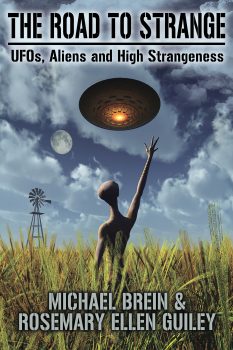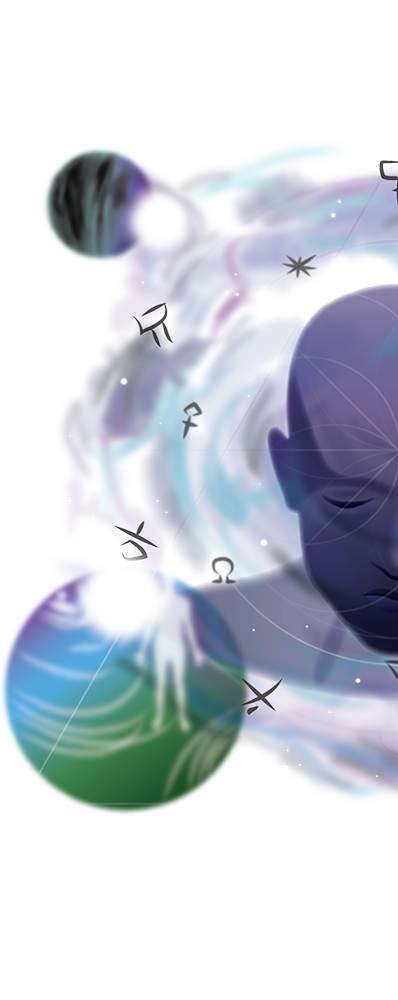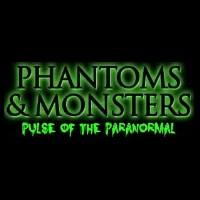Review of The Road to Strange: UFOs, Aliens and High Strangeness, by Michael Brein and Rosemary Ellen Guiley (New Milford, CT: Visionary Living, Inc., 2018). ISBN: 9781942157250
Disclaimer: I have two entries in this collection. Also, a book that I am co-authoring with my wife about our two-year investigation of a haunted library in North Carolina (subject of one of the two entries in this book) will be published by Visionary Living in the summer of 2018.
 Followers of my blogs and my work know that I have long been an advocate for Telling our Stories. I have seen the power of story on stage in social justice theatre productions, in legislative lobbying for equal rights, and in swaying public opinion. In the news as of late are the powerful stories of teenagers demanding changes to gun laws.
Followers of my blogs and my work know that I have long been an advocate for Telling our Stories. I have seen the power of story on stage in social justice theatre productions, in legislative lobbying for equal rights, and in swaying public opinion. In the news as of late are the powerful stories of teenagers demanding changes to gun laws.
Although the field of paranormal investigation may seem worlds (and dimensions) apart from my three decades of work as a content creator and storyteller, I have found the parallels to be considerable. As I begin to establish myself as a paranormal investigator, I will be centering my talks and workshops squarely in the world of Story. Whether spirits, interdimensionals, or extraterrestrials, the entities that we encounter beyond the veil are characters, with backstories, motivations, and even in many cases, clear personality traits that change over time.
With this in mind, I am approaching this review of The Road to Strange: UFOs, Aliens and High Strangeness, by Michael Brein and Rosemary Ellen Guiley as both a storyteller and a paranormal investigator.
There is no question that a greater percentage of the population is experiencing and reporting paranormal activity. Each month there are new stories and new footage released by governments and organizations like NASA making a case for everything from UFOs to portals.
So why is the field still so far from anything close to resembling mainstream? In part, because the scientific community is quick to dismiss anecdotal evidence as no evidence at all and demands proof that is in most cases “round” so that it will never fit into the “square” space of traditional science. I have spent enough hours in the field to be able to say a few things with assurance: (1) what we are encountering is more in line with the principles of quantum physics than traditional science; (2) these entities are super intelligent and know how to disrupt, manipulate, and ignore scientific measuring equipment—even the most sophisticated and well funded; (3) anecdotal evidence (supported by research, understanding of narrative and story context, and technical data when it can be reliably gathered) can be as compelling and legitimate as a reading on an electromagnetic frequency meter.
Using these three points as our metric, The Road to Strange is the future of paranormal research. Michael Brein, the world’s only “travel psychologist” and Rosemary Ellen Guiley, one of the most acknowledged experts in the field of paranormal research in the twenty-first century, curate a collection of stories that they support with the kind of research, story contextualization, and understanding of nontraditional science that provide the increasing legitimacy this important field demands. This book is a follow-up to their very successful The Road to Strange: Travel Tales of the Paranormal and Beyond, and they plan more books in the series—an indication that this multi-level approach is gaining traction.
The book is broken into four parts: “I Know what I Saw,” “Mystery Lights and Craft,” “Alien Encounters,” and “High Strangeness.” The first section derives its title from the unfortunate fact that experiencers/witnesses are often ridiculed by their family and friends, the traditional science gatekeepers, and in the media. Those who claim abduction experiences (the third section) are particularly targeted. As a storyteller, I always go back to one key idea: characters are driven forward to action by their motivations. What possible motivation could there be to lie about seeing a UFO or being abducted by aliens? I once heard a Mothman witness remark during a lecture that, in the 40 years since he went public, he has made enough money from what he saw to pay his mortgage for a single month. And the ridicule he’s faced in the small towns where he lived and worked far outweighs money or attention being key motivators. Are they just mentally ill attention seekers?
Brein and Guiley’s commentaries in the first three sections focus considerable word count making the case that these experiencers are not such a low percentage of the population that they can be dismissed as crazy and mistaken tale-tellers. The stories in the section titled “Alien Encounters” can test the width and breadth of what the reader is willing to believe about the nature of the alien hierarchy and their designs on Planet Earth and its inhabitants. I am a fan of skepticism: it invites research and respectful debate, which are necessary for any field to maintain its growth. Again, the commentaries provide context, parallel cases, and situate the stories on solid ground that a pure anecdote would fail to provide.
Exploring the limits of our own beliefs is essential. I find it particularly so as a paranormal investigator. A number of years ago I read Ingo Swann’s Penetration. I called the investigator who had given me the book and said, “Do you believe this is truthful, because if it is, it changes everything I’ve ever known.” I found myself asking the same questions reading some of the anecdotes in this book. Knowing Guiley personally, having been in the field with her on numerous occasions going back almost a decade, I trust her like I trust Ingo Swann. By extension I believe the people whose stories are told in this book. And it does change everything. It literally opens doors to other worlds.
“High Strangeness” takes its title from a term coined by researcher and author John Keel. This is the trickster aspect of UFO/paranormal phenomena. The interplay of deception, synchronicity, and flat out bizarre occurrences in these encounters puts these encounters on the very fringe of what might be happening. These cases may be the hardest to make sense of and therefore breed some of the longest commentaries of the book.
In addition to these four sections there are a Preface and Introduction by the two authors, respectively, as well as two Appendices. The first is an interview Brein did with J. Allen Hynek, an investigator and researcher who worked on several government UFO projects and, in the process, moved from cynic to skeptic. His journey could be instructive for others who, to quote X-Files, “want to believe” but find it difficult to do so. The second is a list of “UFO and Related Organizations.” This is another resource for those who want to know more about this subject from professionals from an array of backgrounds, from journalists and police to technicians and scientists who have spent decades amassing and analyzing reports. Like the experiencers themselves, their motivations are certainly not money or attention. The hours are countless, the work often thankless, and the laughter of the gatekeepers aimed their way loud and derisive.
The Road to Strange is long and wide. It is my belief that this excellent book will invite fellow travelers on the journey and, in the process, bring legitimacy to the experiencers who are brave enough to tell their stories in its pages.









